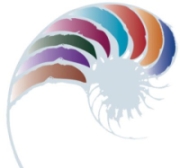<- Homepage: Our place names: Ngāti Maniapoto stories

New Zealand Curriculum (NZC)
This field trip supports a cross-curricular approach to teaching and learning. It is guided by the 2007 New Zealand Curriculum and Te Mātaiaho –The Refreshed New Zealand Curriculum. It aligns best with, but is not limited to, the learning areas, year groups and progressions presented below.
Select one or more learning areas, concepts and progress outcomes to suit your students’ interests and learning needs.
Use this learning experience as a springboard for multiple areas of inquiry. Look for ways to make connections to learning that matters to students, as well as nationally and locally.
Aotearoa New Zealand’s histories–within Te Ao Tangata | Social sciences
Progress outcome by the end of year 3:

Inquiry practice that brings rigour to learning:.
Key questions:
- What are the names of the features of the landscape in our area? Do some features have more than one name? If so, why, and where do the names come from?
- How did Māori name marae, hapū, iwi, and features of the landscape? How and why have some place names in Aotearoa New Zealand changed?
Learning experiences – Explore examples of:
- tangata whenua connections to the local area – names of marae, hapū, iwi, and geological features and how they relate to experiences and whakapapa
- names of geographical features, towns, places, streets, and buildings, and the stories people tell about those names.
Progress outcome by the end of year 8:.

Inquiry practice that brings rigour to learning:.
Key question:
- What practices of Māori transformed the natural environment? How did Māori express their kinship with and custodianship of the environment? How did naming features of the land express their connection with it?
Learning experiences – Explore examples of:
- how iwi gave expression to their world-view of a deep kinship and holistic relationship between themselves and the natural world.
- naming as an expression of connection to places, features of the natural environment, flora, and fauna.
English (NZC 2007)
Listening, reading and viewing
Ideas: Show a developing understanding of ideas within, across, and beyond texts.
E.g. Indicators at level 3:
- uses their personal experience and world and literacy knowledge confidently to make meaning from texts
- makes meaning of increasingly complex texts by identifying main and subsidiary ideas in them
- starts to make connections by thinking about underlying ideas in and between texts
- recognises that there may be more than one reading available within a text
- makes and supports inferences from texts with increasing independence.



